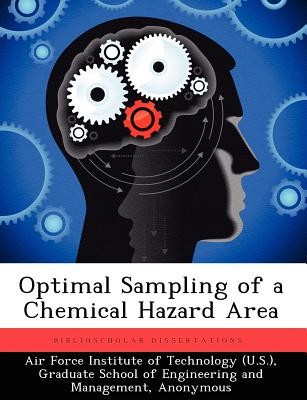
- We will send in 10–14 business days.
- Author: Jennifer Plourde
- Publisher: BiblioScholar
- ISBN-10: 1249443792
- ISBN-13: 9781249443797
- Format: 18.9 x 24.6 x 0.6 cm, softcover
- Language: English
- SAVE -10% with code: EXTRA
Reviews
Description
This thesis proposes a methodology for optimally sampling a chemical hazard area subsequent to a chemical weapons attack. The objective is to identify the maximum number of areas that no longer require protective gear for safe operations. We model the area as an undirected graph and employ network analysis techniques to provide a methodological framework for identifying an optimal sampling sequence within a fixed time limit. We propose four models that characterize the secondary vapor concentrations: i) static and deterministic, ii) static and stochastic, iii) dynamic and deterministic, and iv) dynamic and stochastic. Comparisons of the static cases and their dynamic counterparts demonstrate the impact of temporal evolution of vapor concentrations on the optimal sampling path. We conclude that the number of safe areas may be either under- or over-estimated depending on the assumed nature of the secondary vapors.
EXTRA 10 % discount with code: EXTRA
The promotion ends in 17d.10:50:14
The discount code is valid when purchasing from 10 €. Discounts do not stack.
- Author: Jennifer Plourde
- Publisher: BiblioScholar
- ISBN-10: 1249443792
- ISBN-13: 9781249443797
- Format: 18.9 x 24.6 x 0.6 cm, softcover
- Language: English English
This thesis proposes a methodology for optimally sampling a chemical hazard area subsequent to a chemical weapons attack. The objective is to identify the maximum number of areas that no longer require protective gear for safe operations. We model the area as an undirected graph and employ network analysis techniques to provide a methodological framework for identifying an optimal sampling sequence within a fixed time limit. We propose four models that characterize the secondary vapor concentrations: i) static and deterministic, ii) static and stochastic, iii) dynamic and deterministic, and iv) dynamic and stochastic. Comparisons of the static cases and their dynamic counterparts demonstrate the impact of temporal evolution of vapor concentrations on the optimal sampling path. We conclude that the number of safe areas may be either under- or over-estimated depending on the assumed nature of the secondary vapors.


Reviews